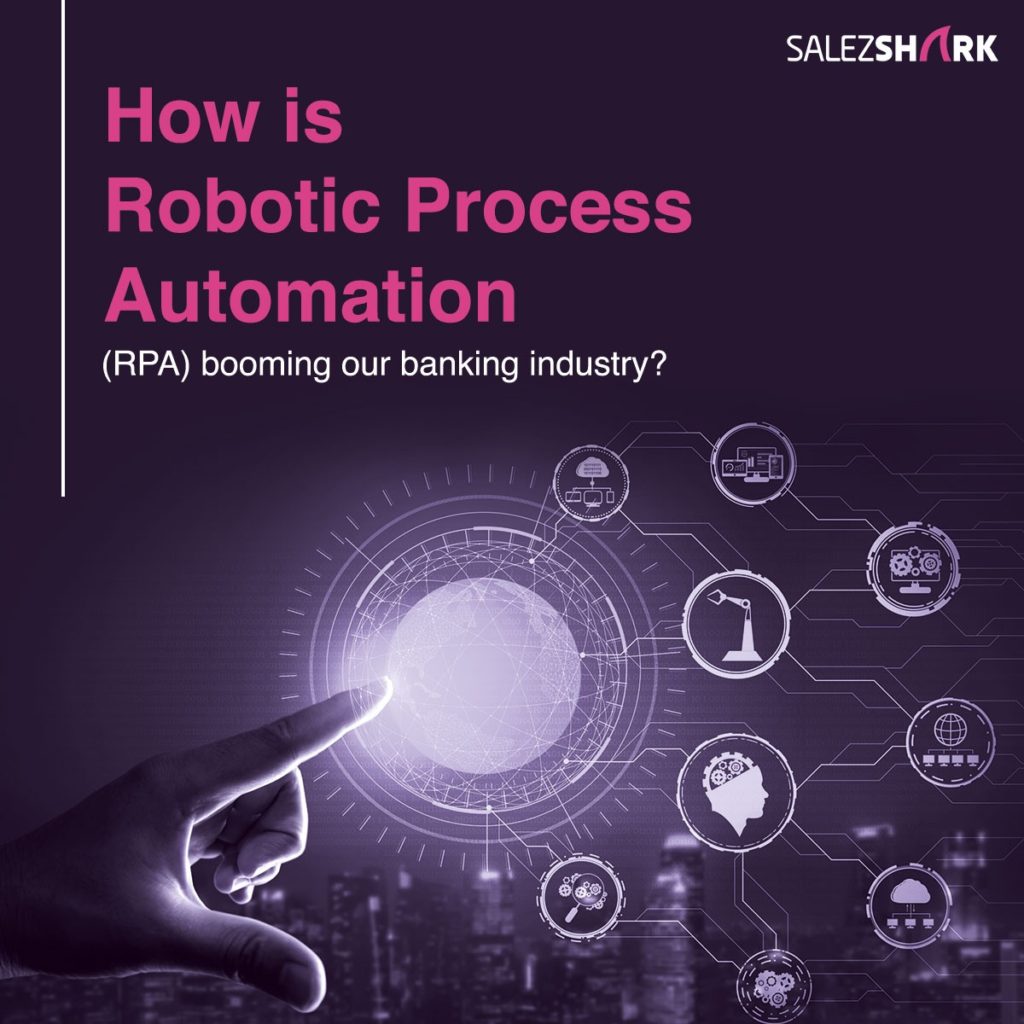In today’s scenario, our banking industry is under tremendous pressure. The reason is to improve productivity and efficiency with reliable and secure financial services to its customers. To accomplish this goal, automation has arrived into the picture. And, it is not a new concept in the banking sector. We have already seen it while operating ATM machines. Banking operations are carried out either using RPA or WLA. Out of two, Robotic Process Automation (RPA) is the latest automation in the banking sector.

RPA software works well for the front-end banking processes. It is typically installed on desktops to automate common interactions with an end-user. RPA technology driven by machine learning and artificial intelligence is getting better every day.
Robotic Process Automation – Dynamic Blessing for Banking Sector
What is RPA meaning in banking?
RPA is a software technology that builds and deploys software robots to imitate humans actions interplaying with digital systems. It is used by various banks to automate manual business processes so that banks may remain stabilized in this competitive era.
If you want to dig deeper into the concept, experts suggest RPA definition in banking as the use of a bunch of robots and AI systems to replace and elevate human operations involved in banking. As per Forrester’s estimation, the RPA market is expected to cross $2.9 billion by 2022.
The development in digital banking solutions has convinced major banks to implement this technology to satisfy their customers and retain numerous advantages. RPA robot performs repetitive and mundane tasks like logging into banking applications, extracting customer data, filling forms, and completing routine analyses on behalf of humans. Advanced robots can even make complex decisions using advanced machine learning models.
Use Cases of Robotic Process Automation
RPA has abundant applications in the BFSI segment to release the manpower to enable them to focus more on important tasks. Some of RPA use cases include:
- Customer Service
- Accounts Payable
- Fraud Detection
- Compliance
- KYC
- Credit Card Processing
- Mortgage Processing
- Report Automation
- General Ledger
- Account Closure Process
- Account Origination & Receivable
- Underwriter Support
- Deposits & many more.
How does RPA software implement in the banking process?
The major objective of Robotic Process Automation in the banking industry is to erase the repetitive work that results in poor productivity. RPA tools are used more in big banks. Its implementation involves:
- An accurate automation procedure is identified.
- An overlapping of banking applications and business processes is evaluated.
- Software robots are employed to perform automation to the banking process.
- Robots are governed and monitored to achieve excellence.
If implemented properly, Robotic Process Automation services can be genuinely helpful for the banking sector by automating manual and time-consuming tasks.
Let’s move ahead to know how banks can rip the financial benefits with less human resources using RPA automation.
Benefits of RPA Automation
The largest banks in Japan have been implementing RPA to eliminate additional labor costs for higher operational efficiency. Bank employees need to handle voluminous customers’ data. Doing it manually increases the probability of errors. Banks all around the globe are considering RPA solutions to get rid of the manual processing of this huge data.
Successful Fraud Detection
To surveil every transaction has become very challenging for bank management. With the arrival of RPA technology, fraud detection has shown significant progress. Now, the RPA process comes with an automatic robot that is capable of detecting each and every fraud using the ‘if-then algorithm.
Improve banking process
Data digitization has enabled banks to minimize paperwork. Robotic Process Automation is powerful to scan relevant information and extract analytical data. Different RPA service providers offer tools embedded with the drag-and-drop technology to automate processes with minor to zero development. In this way, robotic bots take care of payroll, data entry, and other manual tasks 24/7 to allow banking professionals to focus on more strategic work.
Enhance operational efficiency
Once banks correctly set up RPA software, they can make their processes much efficient in terms of both operations and time.
Cost-effectiveness
Yes, it’s true that cost-saving is critical to the banking industry like other industries. Banks can look at the methods to save around 25-50% of processing time as well as cost.
Better Customer Experience
RPA service solutions are useful to banks to improve their customer experiences. Nowadays, customers are no longer needed to reach out to bank staff for solving their common problems. RPA robots quickly analyze the issues of customers and instantly provide answers to their queries. In this manner, the banking staff feels comfortable focusing on other complicated customer problems.
Availability
RPA robots are always available no matter whether you are looking to minimize manual errors or achieve high accuracy at a low cost.
No need for new IT Infrastructure
Earlier new infrastructure was often required before beginning traditional IT projects. But the development of RPA in banking eliminates the need for new infrastructure. Instead, they can leverage existing infrastructure to reap the benefits.
Minimally Invasive solution
This software offers one unique feature that enables banks to use the native user interfaces of already existing legacy systems for automation. It implies that RPA automation is a “minimally invasive” solution that creates ideally upon existing IT infrastructure.
RPA Future Roadmap
Robotic Process Automation is creating a strong environment to help the banks to withstand tough competition in this era. Now it’s quite easy to deliver high-quality banking services using RPA without compromising security. So, it’s high time to work upon a robotic future for smart banking operations in the near future.
